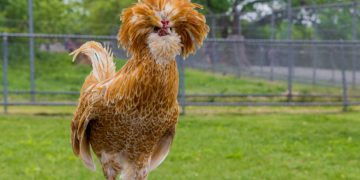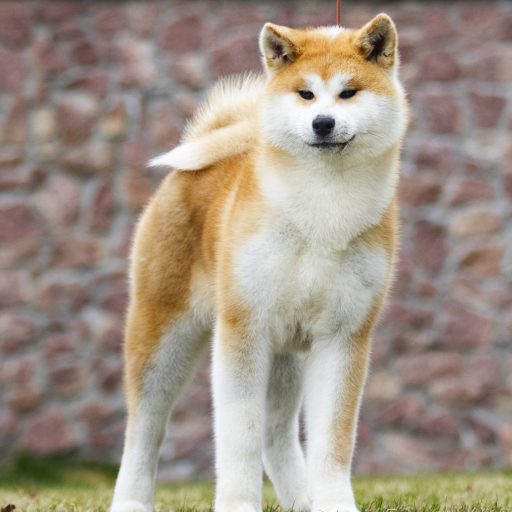The Padua is the European ornamental hen par excellence. Recognizable by its large crest of feathers, instead of the crest, it is a pleasant hen that will certainly attract the attention of those around you. Whether you want her to compete at a major poultry show or enjoy adopting an unusual hen, this may be the perfect bird.
Physical peculiarities
The greatest physical peculiarity of the Padua hen is of course its crest. In both sexes, the head feathers grow and cascade over the animal’s head and face, sometimes causing sight problems. This crest is supported by a bony prominence of the skull (the Padua skull, sometimes seen in other races). These hens are also bearded and sideburned, resulting in a profusion of fanned feathers around the head and face. The rooster has an unusual V-shaped red crest, which often gets lost in the feathers on its head. Mumps and barbels are buried under the beard.
Egg template: 35/50g. White shell.
Plumage: fawn with white borders, gold, black with white crest, white with black crest, silver, white, blue, sometimes cuckoo.
Eyes: red irises.
Beak: medium, fairly wide, the nostrils are clearly visible.
Crest: no crest. It is replaced by an outgrowth of flesh on which its crest grows.
Chest: small.
Mumps: small and hidden by the beard.
Tarsi: medium, grey, without feathers, 4 fingers.
Behavior and character
The Padua is a calm and gentle bird, its nature makes it an ideal pet if you have small children, who will be unable to resist the temptation to hold and cuddle this hen, which it tolerates very well.
Occasionally she may be nervous and try to flee by flying, but this is usually due to visual problems caused by her head plumage. Talking or whistling as your chicken approaches will let her know you’re coming and she’ll be less likely to jump up.
Their friendliness means that they are often placed quite low in the hierarchy and their abundant feather headdress can cause pecking from other breeds, this is something to watch out for if you are also housing other breeds of hens more dominant.
Padova hens are known to be very curious. Sometimes they end up being trapped somewhere and often need your help to get out.
Feed
Padova hens scrape the ground with pleasure and find their own food and entertainment very well, so a classic chicken feed is perfectly adequate. Although she is not the largest of layers, the Padua needs her daily dose of protein. In case you don’t opt for layer pellets, be sure to give her some supplements (mealworms, meat, dairy products, shellfish, Brussels sprouts, nuts and seeds).
You will also need to pay attention to the positioning of your drinkers, especially in winter. When they go to drink, they are likely to wet the feathers of their crest, which can promote a cold snap.
Reproduction
These hens rarely brood, but this can obviously vary from strain to strain. Many Padova hens are bred for ornament and display, but some breeders have chosen to stay more true to the origins of this gallinaceous and these hens are more likely to be better layers and tend to broody.
If you want to see your hen reproduce, try to test her instincts by placing dummy eggs in a nest box to see if she is interested, or invest in an electric incubator.
Health
The Padua hen does not have any particular health problem, but it is very sensitive to humidity, which can be a vector of disease.
The feathers on the head can also be a nest for lice or mites, so they should be checked regularly so that they can be treated accordingly. Feathers that interfere with vision must sometimes be trimmed slightly for the welfare of the bird. Not only for the ability to see predators, but also to keep feathers out of the eye which could lead to eye infection.
Padova chicks should be watched closely for the first few weeks of life due to the bony prominence of their skulls. This protrusion is not solid immediately, so a well-aimed peck on the head could kill or seriously injure the chick.
Place of life
Due to their visual impairment, the Padua is not as well equipped as other breeds for a free range lifestyle. Although they like to forage, they are easy targets for predators, as they cannot see them when attacking.












